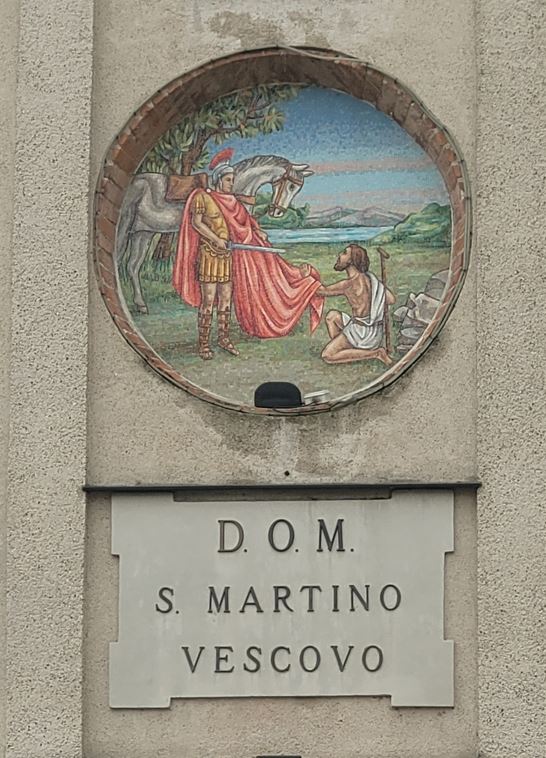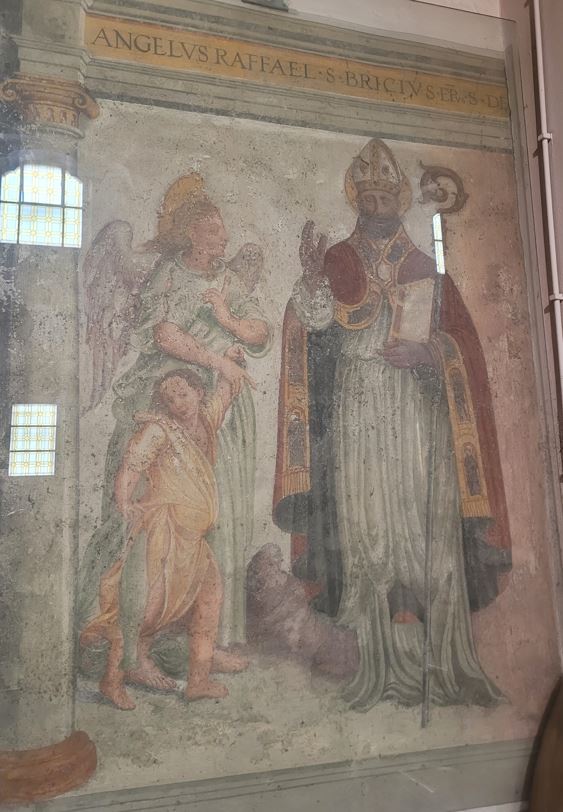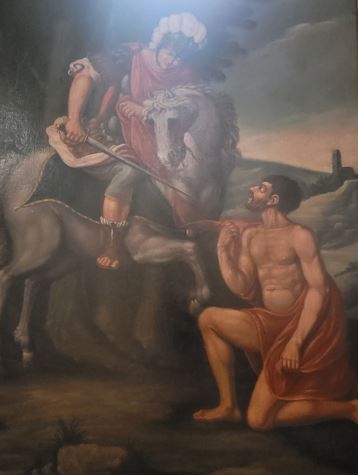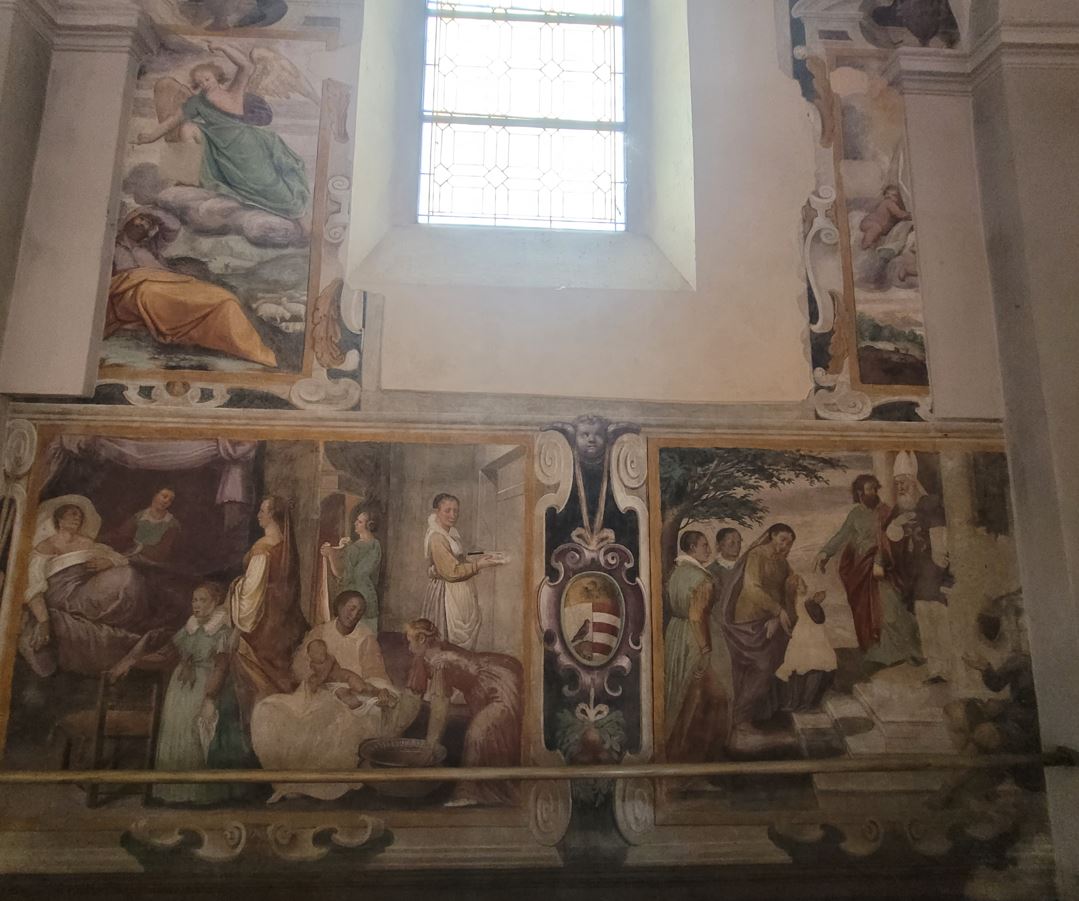L’église Saint-Martin (chiesa San Martino Vescovo) de San Martino Siccomario est construite sur le lieu présumé où saint Martin a passé son enfance. Les parents de Martin étaient logés dans le « Sicco Mario », faubourg sud de la ville où passaient les voies romaines vers Rome ou la Méditerranée. La légende raconte que la maison fut souvent protégée lors des crues.
Une première église aurait été construite au Ve siècle par l’évêque de Pavie saint Crispin et consacrée en 448 par saint Germain d’Auxerre. Reconstruite au XIe siècle, un document de 1199 montre que l’archiprêtré de San Martino Siccomario gravitait dans l’orbite de l’église de Tours. De nouveau reconstruite au XIIIe siècle, la paroisse est mentionnée comme San Martino in Terra Arsa. En 1576, l’édifice fait l’objet d’une importante restauration.
Au début du XVIIIe siècle, en raison des crues du Pô et du Tessin qui avaient endommagé la structure, l’église paroissiale a fait l’objet d’une nouvelle reconstruction. Dans les registres de la visite pastorale de 1768, Monseigneur Bellingeri note que l’église a trois nefs, mesure 46 brasses de long et 20 brasses de large (84,12 x 36,5m), que le sol était en terre cuite et qu’à l’intérieur se trouvaient, outre l’autel principal, les deux autels latéraux dédiés à la sainte Vierge de la Ceinture et aux saints Marie Immaculée et Jean-Baptiste.
En 1817, conformément à la bulle Beati Petri apostoli principis du pape Pie VII du 17 août et au bref Cum per nostras litteras du 26 septembre de la même année, l’église, qui appartenait déjà au diocèse de Pavie, est rattachée au diocèse de Vigevano ; en même temps, elle devint le siège d’un vicariat comprenant sept paroisses au total.
L’église est couverte de fresques. L’une d’elles le montre au milieu de sa famille avec la locution « Hic altus est » (Il a grandi ici), une autre le montre en soldat agenouillé devant le Christ qui porte la moitié de son manteau. Un tableau figure la charité de saint Martin, qui se trouve également dans un oculus sur la façade de l’église.
The church of Saint Martin (chiesa San Martino Vescovo) in San Martino Siccomario is built on the presumed site where Saint Martin spent his childhood. Martin’s parents lived in « Sicco Mario », the southern suburb of the city where the Roman roads to Rome and the Mediterranean passed. Legend has it that the house was often protected during floods.
The first church was built in the 5th century by Saint Crispin, bishop of Pavia, and consecrated in 448 by Saint Germain d’Auxerre. Rebuilt in the 11th century, a document from 1199 shows that the archpriesthood of San Martino Siccomario gravitated in the orbit of the church in Tours. Once again rebuilt in the 13th century, the parish is referred to as San Martino in Terra Arsa. In 1576, the building underwent a major restoration.
At the beginning of the eighteenth century, the parish church was rebuilt after the Po and Ticino floods damaged the structure. In the records of the 1768 pastoral visit, Monsignor Bellingeri noted that the church had three naves, was 46 fathoms long and 20 fathoms wide (84.12 x 36.5 m), that the floor was made of terracotta and that inside, in addition to the main altar, there were two side altars dedicated to the Blessed Virgin of the Belt and to Saints Mary Immaculate and John the Baptist.
In 1817, in accordance with Pope Pius VII’s bull Beati Petri apostoli principis of 17 August and the brief Cum per nostras litteras of 26 September of the same year, the church, which already belonged to the diocese of Pavia, was attached to the diocese of Vigevano; at the same time, it became the seat of a vicariate comprising a total of seven parishes.
The church is covered in frescoes. One shows him in the midst of his family with the phrase « Hic altus est » (He grew up here), while another shows him as a soldier kneeling before Christ, who is wearing half his cloak. A painting depicts Saint Martin’s charity, which can also be seen in an oculus on the façade of the church.







